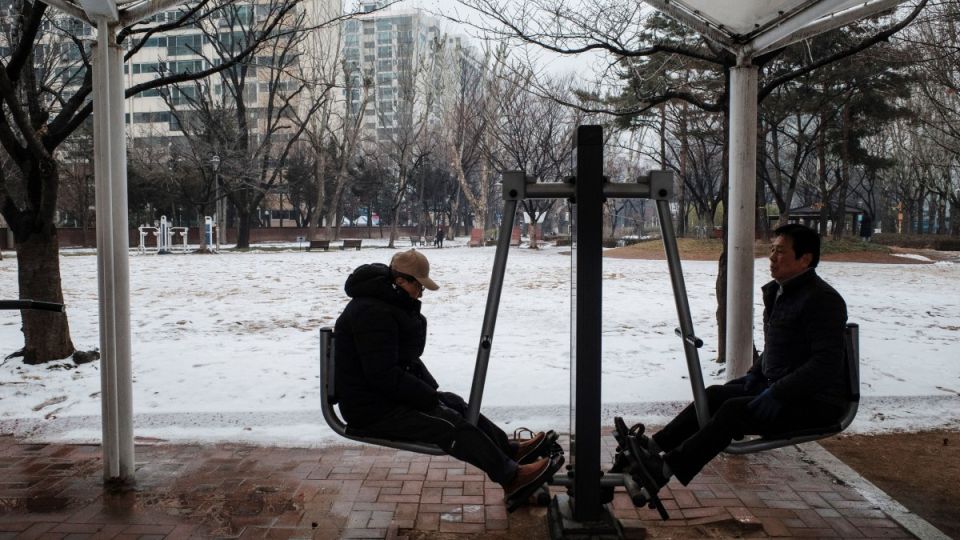July 11, 2025
SEOUL – Only about 1 in 4 South Korean adults engage in enough physical activity to meet recommended health standards, making the country one of the most physically inactive populations in the world, according to government data released Thursday.
The Korea Disease Control and Prevention Agency reported that only 26.6 percent of adults in the country engaged in moderate-to-vigorous physical activity, or MVPA, at recommended levels in 2024. That means nearly 3 out of 4 Koreans do not get enough exercise.
The moderate physical activity standard includes activities that are somewhat more physically demanding than usual and cause slightly heavier breathing — such as leisurely swimming, doubles tennis, badminton or carrying light objects — at least five times a week for 30 minutes. Vigorous activity, meanwhile, covers activities that are much more physically demanding and cause heavy breathing — such as running, hiking, fast-paced cycling and squash — at least three times a week for 20 minutes.
While the MVPA participation rate slowly rebounded postpandemic, having dipped to an all-time low of 19.7 percent in 2021, the current 26.6 percent is still far below desirable levels, the agency said.
“It is encouraging that the rate of moderate-to-vigorous physical activity has been increasing since the return to daily life,” said KDCA Commissioner Jee Young-mee. “However, as of 2022, the global physical inactivity rate was 31.3 percent, while South Korea’s was 58.1 percent. That’s about 1.9 times higher.”
South Korea placed at No. 191 among 195 countries surveyed by the World Health Organization — starkly lagging the global inactivity rate — with Sweden at 8.7 percent, Denmark at 12.14 percent and China at 23.83 percent. Inactivity is defined as performing less than 150 minutes of moderate physical activity or 75 minutes of vigorous physical activity per week.
The analysis also found that South Korean men (30.2 percent) are more active than women (19.5 percent), and young adults in their 20s (32.3 percent) had the highest activity levels among all age groups. In particular, 42.2 percent of men in their 20s met MVPA standards — the highest across all demographics — while only 18.3 percent of men aged 70 and above did.
Meanwhile, women did not show a consistent decrease with age. Those in their 40s (22.9 percent) and 50s (21.8 percent) were more active than younger or older women, suggesting different patterns in physical activity between men and women.
Where you live matters
Regional disparities were also evident. Sejong showed the highest increase in MVPA from 2021 to 2024, jumping 11.6 percentage points to 29.1 percent. Ulsan and North Chungcheong Province followed with similar gains. Meanwhile, Gwangju saw the smallest change over the same period, with an increase of just 0.9 percentage point.
Residents in areas outside the major cities were more physically active, likely due to the labor-intensive nature of agricultural and fishery jobs. In contrast, lower activity levels in metropolitan areas were attributed to sedentary urban lifestyles dominated by desk jobs and reliance on public or private transport.
In 2024, Seoul recorded an MVPA rate of 26.8 percent, while North Gyeongsang Province saw a rate of 31.8 percent and Jeju Island recorded 33 percent.
The KDCA also found significant correlations between physical inactivity and chronic or mental health issues. Adults without hypertension or diabetes were 1.1 times more likely to engage in MVPA than those with such diagnoses. Similarly, those without depressive symptoms were 1.2 times more likely to be physically active than those who experienced depression.
“This reinforces the critical link between physical activity and both physical and mental health,” the agency noted, urging more proactive public health measures.
Jee Young-mee, the KDCA commissioner, called the situation alarming, noting that while Korea’s activity levels are improving post-pandemic, they remain severely low by global standards.
“Moderate-to-vigorous physical activity is not just about disease prevention. It’s essential for healthy aging and overall quality of life,” she said. “Neglecting it can increase the risk of chronic illness and mental health decline.”
Jee urged people to incorporate movement into their daily routines, even starting with small steps, and called for continued government investment in creating supportive environments for active living.


